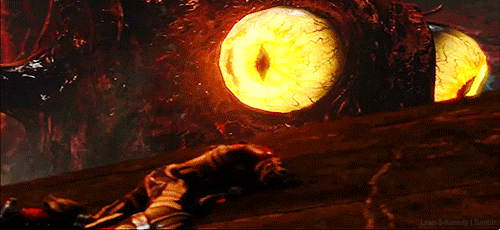The most obvious of this is the following scene:
"That'll hurt in the morning"
This is what being shot to death by a hail of bullets looks like. Otomo did not hold back on anything; every last detail of realism was left in the film, including gore. When you don't hide any of it, you are drawn into the story as the visible effort to hide gore disappears, and you get more realism. It is also naturally shocking, another way to draw you into the film.
"At least you can shoot the second glob"
"Maybe it wasn't a bomb..."
Now, for the sound. Most notable is the scene above, at the beginning (and end) of the film. You would imagine this having a large, deep boom, but it didn't. It was silent. No sound was made before the huge letters announcing the name of the film. There were also scenes where the esper children teleported or hovered to certain locations, as well as the aforementioned water-walking. All of which was silent. There are no gifs of these available.
I believe I should also touch on Grave of the Fireflies before the end of this. It was notable in that it was drama "deeply embedded in Japanese history and culture" (Napier 26). Although the story itself was fictional, it took place during a very real period. Other Japenese culture references we saw was also in Dōjōji Temple, which was from a Japanese play.


No comments:
Post a Comment